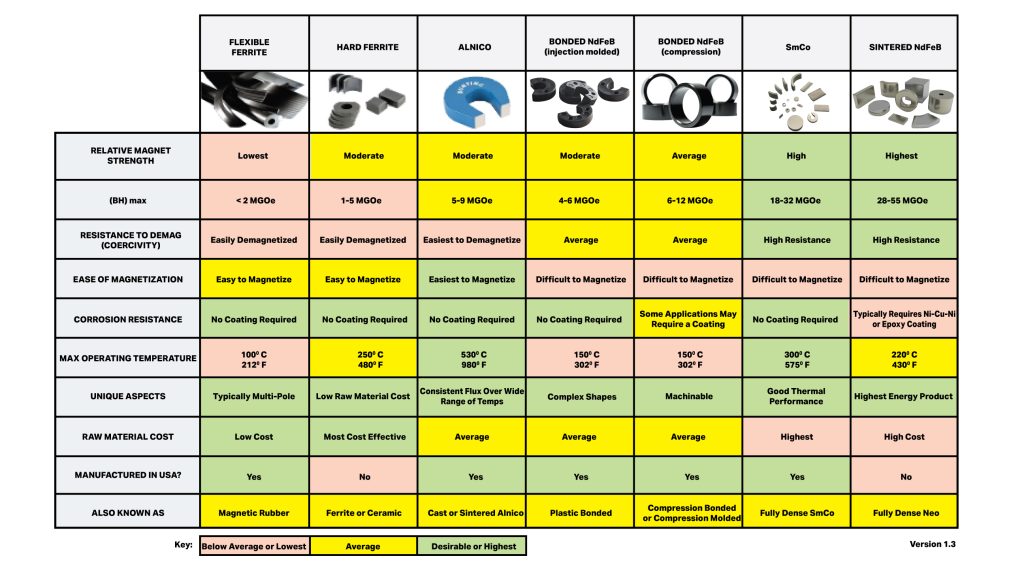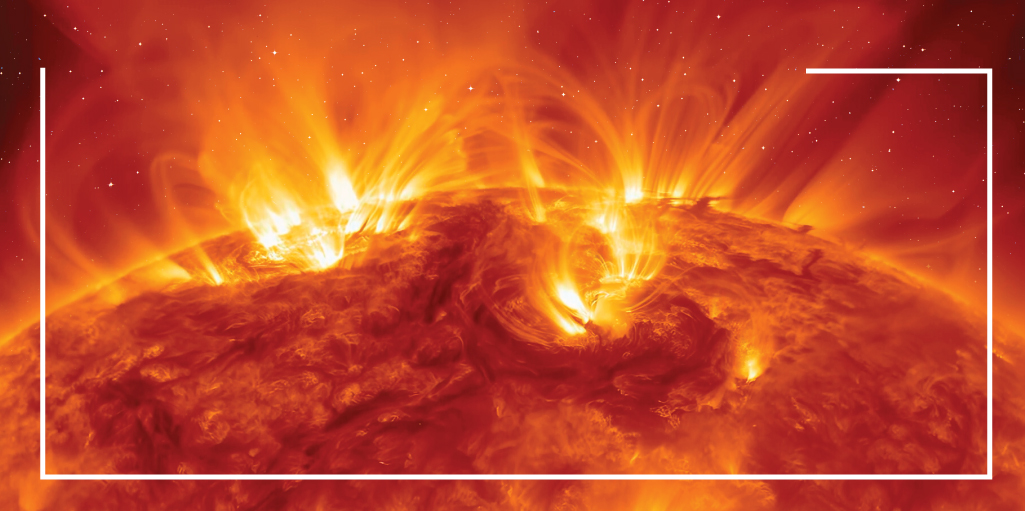All of the commonly available permanent magnet materials experience either reversible or permanent changes in magnetic output as a result of exposure to temperatures above or below room temperature.
Changes in temperature affect both flux output, which is proportional to Br, and resistance to demagnetization, which is proportional to Hci. The magnitude of these change are related to the reversible temperature coefficient of induction (Br) or the reversible temperature coefficient of coercivity (Hci). These are referred to as α (alpha) for Br and β (beta)for Hci respectively. The table below shows the temperature coefficients for a range of magnet types:
| Material | Grade | Alpha (%/C°) | Beta (%/C°) | Curie Temperature (C°) |
| Alnico | 5 | -0.02 | -0.01 | 900 |
| Alnico | 8 | -0.02 | -0.01 | 860 |
| Sm2Co5 | 20 MGOe | -0.04 | -0.4 | 700 |
| Sm2Co17 | 27 MGOe | -0.035 | -0.2 | 810 |
| Bonded NdFeB | MQP-A | -0.13 | -0.4 | 312 |
| Bonded NdFeB | MQP-B | -0.11 | -0.4 | 360 |
| Sintered NdFeB | N48M | -0.12 | -0.65 | 312 |
| Sintered NdFeB | N38SH | -0.12 | -0.65 | 312 |
| Sintered NdFeB | N38UH | -0.1 | -0.55 | 340 |
| Hard Ferrite | C5, C8 | -0.2 | 0.27 | 450 |
There are three types of loss in magnetic output influenced by the above temperature coefficients and the Curie temperature of the magnet. These are defined as follows:
- Reversible: The flux output of the magnet increases or decreases as temperature changes. Under closed circuit conditions and within a specified temperature range, when the temperature returns to room temperature, the original flux output is observed. This change in flux output with temperature is related to the Curie temperature of the magnet. The Curie temperature of a magnet is the temperature above which certain materials lose their magnetic properties.
- Irreversible but recoverable: When a magnet is in a magnetic circuit, temperature changes within a specified range, result in the magnet being partially or completely demagnetized. However, the magnet can be remagnetized with most if not all of the original flux output being recovered.
- Irrecoverable: The magnet has been exposed to temperature or environmental conditions that result in a degradation and structural change of the magnet. In this case remagnetization cannot recover the original flus output.
Because of the variation in the temperature coefficients and Curie temperatures different permanent magnet materials and grades have a wide range of working temperatures. The table below lists the various materials and their suggested maximum working temperatures:

Interesting fact: Because the temperature coefficient of Br for Sm2Co17is significantly lower than that of NdFeB that around 150 C° and above a Sm2Co17 magnet outperforms NdFeB in terms of its (BH)max.

